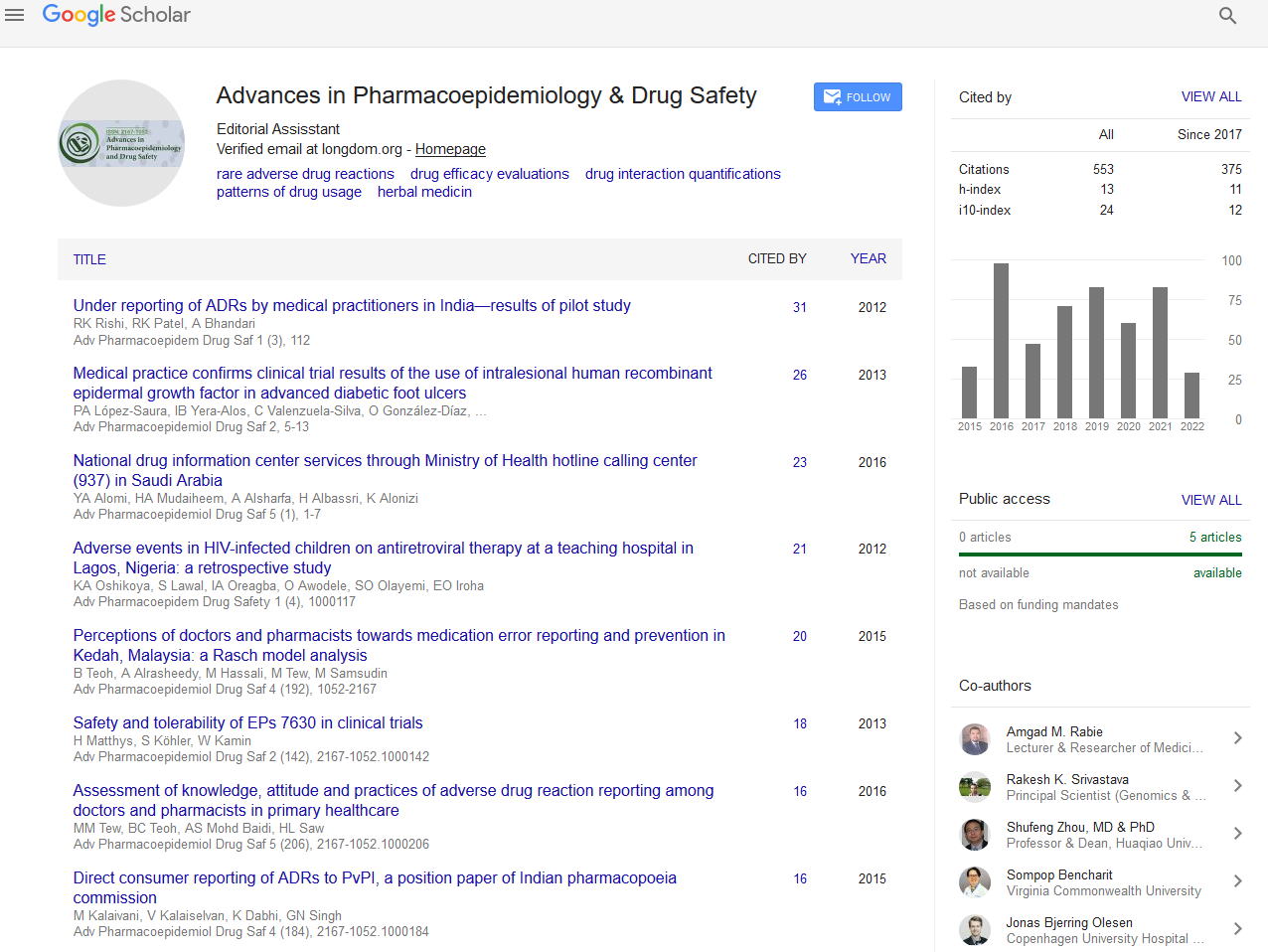Indexed In
- Open J Gate
- Genamics JournalSeek
- Academic Keys
- JournalTOCs
- RefSeek
- Hamdard University
- EBSCO A-Z
- SWB online catalog
- Publons
- Geneva Foundation for Medical Education and Research
- Euro Pub
- Google Scholar
Useful Links
Share This Page
Journal Flyer

Open Access Journals
- Agri and Aquaculture
- Biochemistry
- Bioinformatics & Systems Biology
- Business & Management
- Chemistry
- Clinical Sciences
- Engineering
- Food & Nutrition
- General Science
- Genetics & Molecular Biology
- Immunology & Microbiology
- Medical Sciences
- Neuroscience & Psychology
- Nursing & Health Care
- Pharmaceutical Sciences
Abstract
Estimated Risks of Fatal Events Associated with Acetaminophen, Ibuprofen, and Naproxen Sodium Used for Analgesia
Kenneth J. Rothman and Lee L. Lanza
Objective: We assessed the net effect on risk of death for within-label use of acetaminophen and the two nonaspirin alternative oral non-prescription analgesics available in the U.S. (ibuprofen and naproxen sodium) in relation to upper gastrointestinal hemorrhage, liver failure, and renal failure.
Methods: For each drug we obtained estimates of recent general-population prevalence of use and the number of deaths in the US from acute liver injury, acute renal failure, and gastrointestinal hemorrhage for the years 2006-2008 in the population age 20 years or older. We searched the literature and reviewed all informative epidemiologic studies to obtain estimates of the relative risks for each analgesic-endpoint combination. From the estimates of prevalence, relative risk and total one-year risk for the U.S. population, we back-calculated the risk among unexposed, using it as a benchmark from which we could obtain the change in absolute risk related to using each analgesic.
Results: Under most assumptions for the relative risks among the different analgesics, acetaminophen use carried the smallest absolute increase in risk, the best estimate being about 35 deaths per million in one year. The comparable estimated increased risk of death related to use of ibuprofen or naproxen sodium was 64 deaths for ibuprofen and 118 deaths for naproxen sodium per million person-years respectively. Conclusions: When non-prescription analgesics are used according to labeled instructions, acetaminophen use appears likely to be associated with smaller combined risks for upper gastrointestinal hemorrhage, liver disease, and renal disease than is use of ibuprofen or naproxen sodium.


